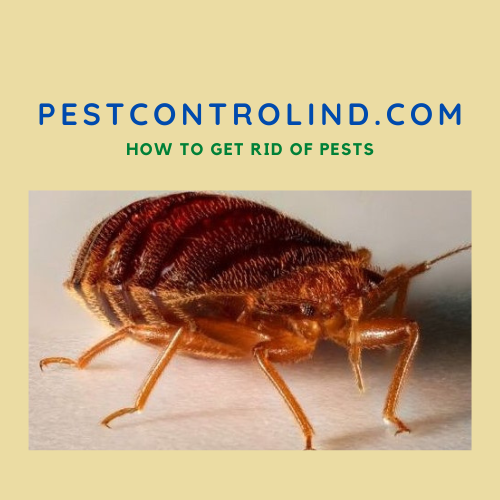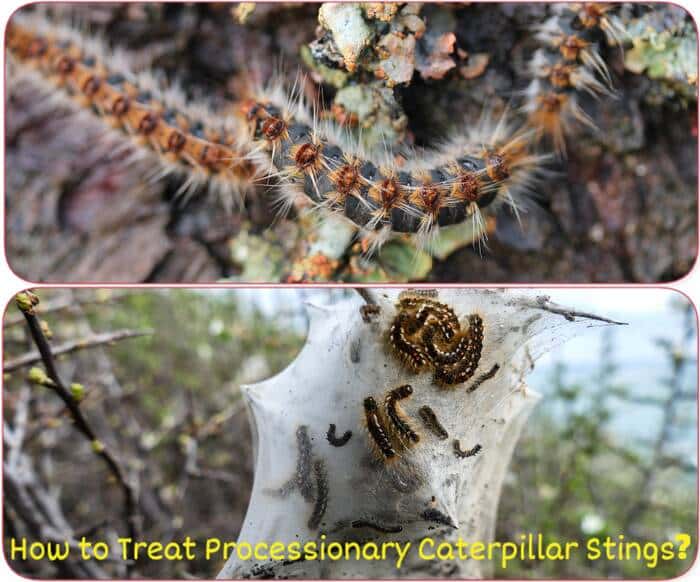How to treat processionary caterpillar stings? What are the symptoms of processionary caterpillar stings? Should we be afraid of their stings for ourselves or for our pets? What are the real dangers of such a sting?
Here are the answers to all these questions!
I. Processionary caterpillars, what are they?
The processionary caterpillar is a small hairy insect (larva of a butterfly) living on oaks or pines, used to move in a single file with its congeners, and which will evolve to give birth to the lepidopteran butterfly Thaumetopoea pityocampa.
The larva or caterpillar is generally between 30 and 40 millimeters long and is completely covered with hives that can cause allergies in humans and animals coming into contact with it.
The insect can be dangerous for the trees it feeds on as well as for humans coming into contact with it.
The insect will evolve to become a butterfly of 30 to 40 centimeters in diameter. It generally feeds on pine needles.
II. The dangers of the processionary caterpillar
The processionary caterpillar poses several dangers to humans and domestic animals knowing that we share the same environment during the spring and summer.
Indeed, the hairy hairs of this caterpillar contain micro poisonous stings that can generate different reactions.
And that is why it is often advisable to get rid of processionary caterpillars as soon as possible if you find them in your garden or property.
1. for humans
If there is direct or indirect contact with the stinging hairs of the caterpillar. These hairs will release allergenic substances in the victim’s body which can cause itching, eye problems, respiratory problems, and in the most extreme cases anaphylactic shock.
2. for pets (dogs and Cats)
Our pets are not safe from coming into contact with processionary caterpillars and being affected, seriously or not.
If a dog or cat is bitten on the tongue, they will start drooling and their tongue will swell and become swollen.
In this case, a veterinarian must be consulted urgently, otherwise, the tongue may become necrotic and fall out. This will make the animal unable to feed itself optimally.
It is also important to make sure that the animal does not lick itself with its injured tongue, as this could make the situation worse.
In any case, bring your pet to the veterinarian as soon as possible.
III. Symptoms of processionary caterpillar stings
A person or an animal that has come into contact with the hairs of processionary caterpillars has different symptoms. They are as follows:
- The stings are very painful and toxic: the human or animal immediately feels intense pain upon contact of its skin with the stinging hairs of the processionary caterpillar.
- Contact with the skin: the reaction is on the parts exposed to the hairs. In the hours following the stings, the person will get severe itching.
- Contact with the eyes: the urticaria hairs can sink into the eye tissue. Inflammation may appear. About 1 to 4 hours after the sting, development of conjunctivitis.
- Contact by inhalation: the hairs of the processionary caterpillar can disturb the respiratory tract. Sneezing, sore throat, difficulty swallowing and bronchospasm may occur.
- Contact by ingestion: ingestion of the stinging hairs and stings can lead to inflammation of the mucous membranes of the mouth and the entire digestive system and will result in hypersalivation, vomiting, and abdominal pain.
In an extreme situation, a person is at risk of life-threatening anaphylactic shock.
This includes hives, sweating, hypersalivation, swelling in the mouth and throat, difficulty breathing, high blood pressure, and possibly loss of consciousness.

IV. How to treat processionary caterpillar stings
There are different ways to treat the stings of processionary caterpillars. Of course, the initiatives vary depending on the severity of the situation.
In the most serious case, go immediately to the doctor or contact the emergency services.
1. skin contact:
In case of skin contact, remove your clothes with gloves and wash them with boiling water, this will remove the toxic sting and get rid of the hair that may stick to the clothes.
Wash your whole body with soapy water, do it with application. Then consult a doctor who can prescribe specific medication.
2. Eye contact:
If your eyes have come into contact with caterpillar hairs, we recommend that you consult a doctor or ophthalmologist urgently.
Specialists will know what to do without making the situation worse. In most cases, this means applying an anesthetic solution and rinsing the injured eye.
Under no circumstances should you try to clean it yourself. It is not simple dust in the eye, it will be very painful and waiting will only make it worse.
3. What if you have inhaled or ingested the allergenic products?
In case of discomfort or respiratory problems, without wasting time, consult a specialist immediately, even if this means going to the emergency room or calling the ambulance.
They will be able to prescribe the appropriate medication for the situation.
If by chance you have ingested processionary caterpillar hairs, start by drinking a lot of water to dilute the hairs and therefore the swallowed allergens.
This will eventually eliminate the poison. Consult a doctor as soon as possible. If necessary, an endoscopy with general anesthesia is recommended to remove the hair.
4. What to do about your pets?
If your pet has been infected by a processionary caterpillar, check and rinse the tongue.
Rinse the mouth and muzzle, and seek urgent veterinary attention.
The veterinarian will administer cortisone. This will stop the poisoning process and relieve the animal of its pain.
V. Some preventive advice
In areas infested by processionary caterpillars, here are some recommendations that will certainly avoid unnecessary inconvenience.
- During the spring, summer until September, avoid drying your clothes outside, especially near a pine tree or any other tree that is suspected of harboring a processionary caterpillar nest.
- Rinse your garden fruits and vegetables thoroughly (a little tip: soak them in a basin with cider vinegar or baking soda and rub them, then rinse them)
- Water your lawns before putting up the grass
- If a tree appears to be affected by caterpillars or other specimens, leave it alone and keep children away from it. It is advisable to contact a professional, or at least if you are able, put on a thick suit, gloves and goggles to eliminate the nest in the trees or eliminate the caterpillars directly.
VI. Types of processionary caterpillars
There are two types of processionary caterpillars:
- The pine processionary caterpillar
- The oak processionary caterpillar
# The Pine Processionary Caterpillar
The pine processionary is a butterfly that belongs to the order of lepidopteran insects and the family Notodontidae.
The larvae of the pine processionary caterpillar are the main pest of pine trees worldwide, but mainly in the Mediterranean region.
The life cycle begins in late summer when the male insects fertilize the females.
The females lay only one clutch on a pine needle. Hatching occurs about 5 to 6 weeks later.
There are four stages of growth and the larvae are very gregarious at all stages.
After larval development, these larvae leave the nest in a procession and search for the suitable ground to pupate.
This procession occurs in early spring when a slight rise in temperature stimulates the larvae to leave.
# The oak processionary caterpillar
The oak processionary caterpillar is a species of caterpillar that nests on oak trees. The caterpillars hatch in the spring and go through several stages, eventually developing irritating hairs.
The caterpillars move lower in the tree as they develop, stripping the tree of its leaves as they go, leaving it vulnerable and weakened.
In the summer, they retreat to the nests to pupate. Adult moths emerge in late summer, living only four days to mate.
The female lays her fertilized eggs high in the tree canopy and the cycle begins again.
Useful Links:
Pine and oak processionary caterpillars
The adult is a stout furry moth which holds its wings like a tent over the body

